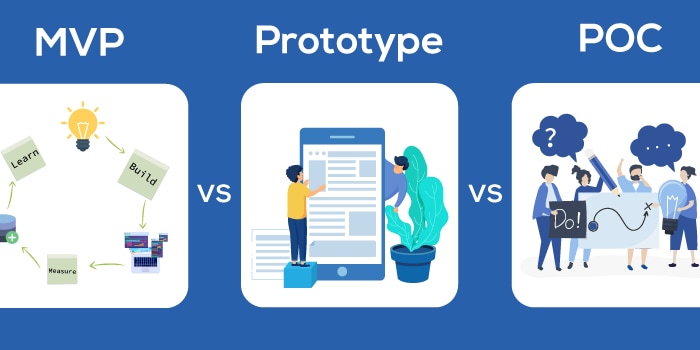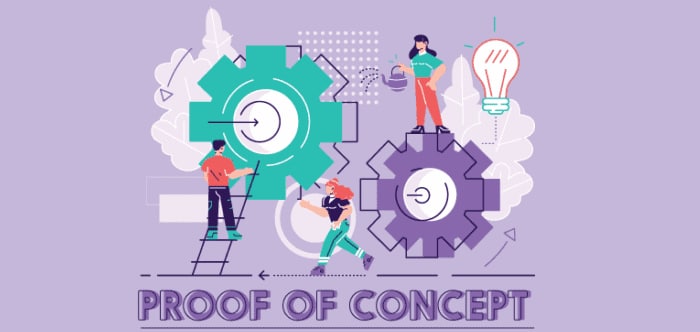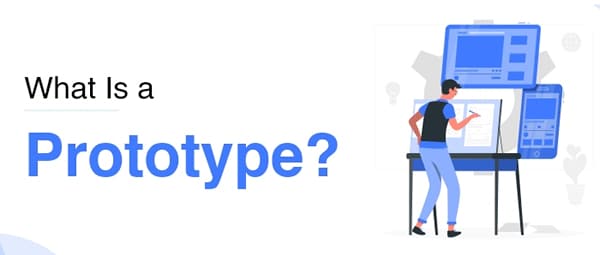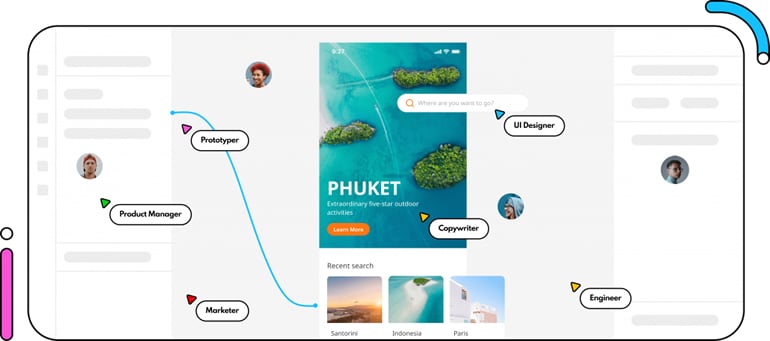POC vs. Prototype vs. MVP: What's the Difference?
Want to Prototype with Ease? Try This Out!
Wondershare Mockitt Prototype Designer realizes easy & rapid prototyping for iPhone, Android, Websites, and more. Drag and drop to create wireframes and prototypes. Give it a try!
What if I tell you that your product will have a higher chance of failing if you don't follow these strategies? You might think that innovative ideas are enough for digital products' success. Yet, it's just the tip of the iceberg. You must consider many factors to ensure your product solves the customers' problems. This testing includes proof of concept, a prototype, and a minimum viable product.
The best part is validating your ideas through these methods will ensure your product's success and save you tons of money. All these approaches are different and serve best in a particular case.

Getting ahead, this article will help you know what precisely these methods are, how they differ, and how to choose the best one for your product. Let's get started.
What Is POC?
The POC verifies if your tech idea is implementable. Since your product considers problems and relies on technology to solve them, the POC is important. This includes checking if your product will work as planned. This, too, without consuming extra resources and time. In short, you'll need Proof Of Concept before developing the product to ensure the idea is doable.
Main POC features
- POC helps you catch investors' interest. Once they like your idea, they'll agree to provide you with seed funding for the product.
- It enables you to determine if you can build the product using current technology. Since you find this in the now, you won't worry about spending extra money and resources in the future.
- Creating your POC using many technologies can help you decide which is best for your product. This allows you to plan a strategy accordingly in the future.
- Lastly, a POC will help you check against the competition. It will help you analyze the product's unique features to stand out from its rivals.
POC Use cases
- You will need a POC when you've many ways to implement an idea.
- Additionally, you can use it when you need more clarification on your product idea. This means that you might need to find out if your product is doable.
- You can use POC to understand the product's limitations and the resources it will need in the future.

POC Audiences
The primary audience for POC is internal domain experts, as you're at the testing level. The audience can include
- Managers, as POC, reduce potential risks while implementing the product.
- Project leaders who determine chances of scalability using POC.
- Stakeholders as it provides a complete product assessment and thus gives them proof before investing.
Meanwhile, POC helps you know if your product idea is viable and all the challenges it will face to ensure it is bulletproof.
Wondershare Mockitt
Prototype Creator >>
What is a Prototype?
A prototype will give you an idea of how your product will look. It demonstrates the main design elements, and user flows to reveal the product value. Note that a prototype is just a draft and doesn't necessarily contain all the features. Besides, it's not for the customers.
A prototype is the best choice for showing your product design. It will also help you realize the complex algorithms and process the system need.

Main Prototype Features
- A prototype helps you identify the UI elements with flaws. This allows you to make changes and optimize your resources.
- A prototype enables you to collect feedback from the test users. This will tell you whether it's easy to use and whether its user flow fits well with the target audience.
- You can simplify your product concept using a prototype. Also, you can present it to be visually appealing. Where POC tells if the creation of a product is possible, a prototype will give the idea a more chiseled form.
- You can create many iterations using tools such as Figma in a short period. This way, you can choose the design that performs well by doing experiments.
Prototype Use Cases
- A prototype is essential when you want to test your product's design.
- It will help you find and then fix gaps in the product flow.
- A prototype can make the product visually appealing. It can also mimic its features based on your needs.
- It can help get customer feedback without actual product development.
Prototype Audiences
The audience can be stakeholders and technical agents, depending on your objectives. A strong prototype is something you can show potential investors. It will show your genuineness and that you have more than just a vague concept for your product.
Prototype Examples
The above prototype shows how the working staff can easily interact with the design. It tells the team what part they must work on by putting them all on the same page. This way, you can identify the user flows and other problems, and the team can make the necessary changes. It's an excellent, ready-made, editable template available on Mockitt.

The above template is excellent for online travel companies. The following prototype can act as a model for a traveling app or webpage in the initial stages. The complete template is for travel agencies. Yet, all the sections are editable. So, you can make changes as per your requirements, all thanks to the Mockitt online community.
What is MVP?
A Minimum Viable Product is a releasable version of your product. It contains minimal features to attract customers and collect feedback for future development. Meanwhile, you can start small and work your way up by providing solutions to customers' pain points.
Main MVP Features
- Minimum Viable Product aims to show the core features of the product. It efficiently communicates to the consumers about the main product idea. This helps get reliable feedback from them.
- By starting small, an MVP understands the pain points of early customers. This allows you address them in the final product.
- MVP helps you narrow down your consumers. Doing so might help you find solutions to problems more effectively and quickly than your rivals.
MVP Use Cases
You've validated your idea and tested your product design. Now, you'll launch the product. This way, you can improve your product over time with the help of feedback from customers.
MVP Audiences
As mentioned earlier, MVP targets early users or customers. This is the stage when the product finally comes out for public use. However, at this point, the product has few customers.

MVP Examples
1. Dropbox
A significant example here would be Dropbox. The creators of Dropbox had a concept to develop online file storage. Before the actual development phase, they wanted people to get a feel for the app.
To do so, they began as a demo video MVP instead of investing and creating the hardware. The little movie demonstrated how the company's initial product would appear and function.
Without a single product in place, it turned out to be a massive success as the number of signups rose overnight. The number of views was enough to sell the concept and gather feedback regarding the product.
2. Buffer's Landing Page
Landing pages are specifically for for marketing goals. They are all on a single page, include content and a call to action, and feature a few fields that users must fill out. These pages can direct visitors to the landing page to promote or sell MVP products.
This way, you can easily develop an incredibly cost-effective landing page. It will increase audience interest and interaction and market your new product. Meanwhile, paying thousands of dollars to build a whole MVP website is no longer necessary. Through client feedback, this plan would expand your customer base and improve your product.
If you wonder how to make prototype with ease. Try Mockitt Prototype Designer to use pre-made templates and edit by yourself!
Should I Choose MVP, Prototype, or Proof of Concept
MVP, POC, and Prototype aren't interchangeable. As we discussed earlier, each approach is for different stages of product development. So, if you want to create a unique product and determine whether it's technically possible, POC is your fit. Additionally, it'll help you decide which technology is better for your project. It'll also help share the technical knowledge with your team members.
However, if you're past that stage and want to visualize the workflow and secure seed funding for your product, try Prototype. It will further be crucial in getting feedback from focus groups. Lastly, you'll need MVP when you want your early users to help you determine your product's market value. It will be the best fit if you want to launch your product quickly with a reasonable investment.
Here, going through all these stages is optional. However, applying these strategies will be a game changer if you want to reduce the risk and refine the product before it enters the market.
Conclusion
Proof Of Concept, Prototype, and Minimum Viable Product serves the same essential function; to validate your idea. What's different is that they all do it at different stages with different patterns. Choosing the right approach can significantly increase the likelihood of your Product's success. It will also ensure you use your resources wisely while saving time and effort.
To sum it up, SOC comes as the first step when verifying the product's technical capabilities. Once you know your idea is implementable, you move to the second step; Prototype. You'll need a Prototype to showcase your concept with little cost. It also helps you fill the gaps in the flow. Lastly, MVP will check the product's response from the customers. It sells the product to early adopters and generates investment for future improvement.


